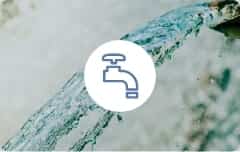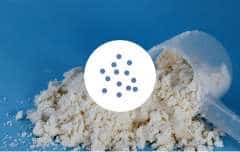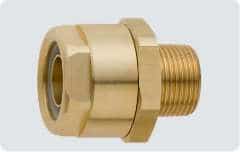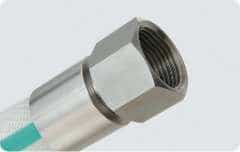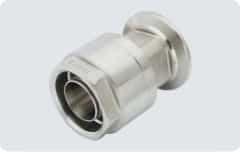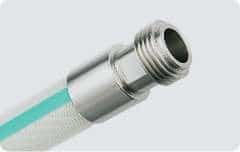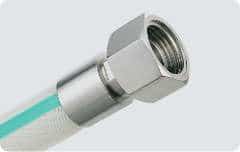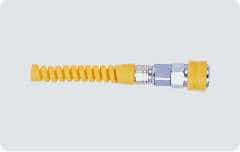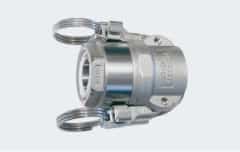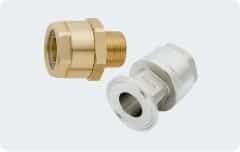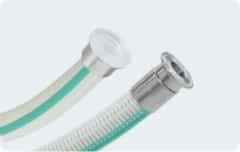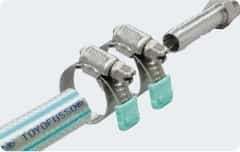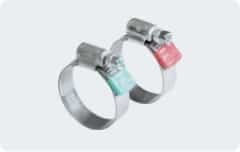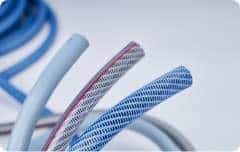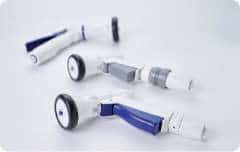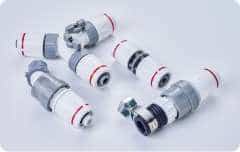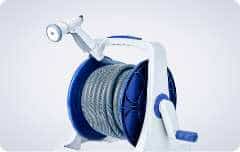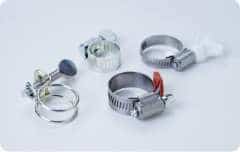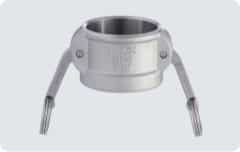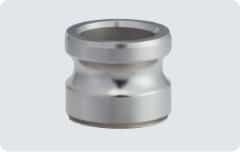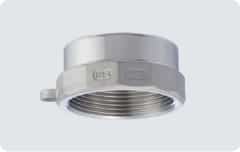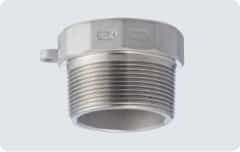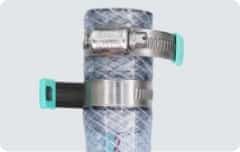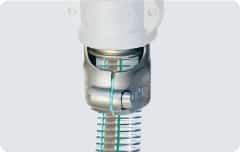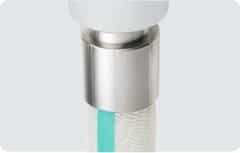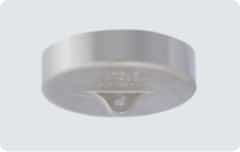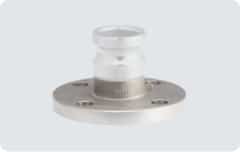FAQ
FAQ


FAQ
hose
View all- Q1 Can sodium hydroxide (caustic soda) be run through the TOYOSILICONE Hose? Fluid
-
A.
Solutions of sodium hydroxide (caustic soda) should generally not be run through the TOYOSILICONE Hose as it can cause degradation of the hose. For CIP (cleaning in place), however, a dilution of 2 to 3% may be used without problems. The TOYOSILICONE has even been used by a CIP equipment manufacturer. Even so, this will result in quicker degradation than using water or air.
- Q2 Is the hose softer as the minimum bending radius is smaller? Specification
-
A.
Smaller minimum bending radius doesn’t necessarily mean it is softer. Although it is a measure of softness, it is not absolute. For example, the bend radius is TOYOSPRING < TOYORON, but in this case TOYORON feels softer. The softness varies depending on the thickness, material and reinforcement structure. Select an appropriate hose with reference to the deflection data and product samples.
- Q3 I measured the size of the hose I’m currently using with a vernier caliper and it’s approximately 20 mm. I’m thinking of getting a hose that also has an inner diameter of 20 mm. Is that ok to select the same size? Specification
-
A.
For used hoses, the ends used for connecting may have become deformed to fit the size of the hose nipple (coupling), and the hose’s overall inner diameter may have increased due to piping internal pressure. Therefore, even if you measured the used hose with a vernier caliper, a slightly different size may be required. To find a hose, refer to the Hose Selection Guide or the specifications table on the Toyox website and select a hose that is thinner and closer to the inner diameter size. Feel free to contact Toyox for assistance in making a selection.
- Q4 Can you provide product samples? Service
-
A.
In order to provide products suitable for the usage conditions, etc., we provide samples upon confirming the usage conditions. Note that samples may not be available depending on the conditions.
- Q5 During use, hoses might bend or collapse in the middle, stopping flow or causing a change in flow rate, possibly resulting in work stoppage or loss. Is there a hose that can improve this? Function and performance
-
A.
There are various types of hoses. Hoses used in factories are roughly divided into hoses reinforced with thread and those reinforced with metal or resin coils. If the currently used hose is reinforced with thread, the hose may bend or collapse. It is possible to minimize bending and collapsing by using a hose reinforced with a metal or resin coil. These reinforced hoses are resistant to bending and collapsing and can be used for vacuum applications. In addition, there are hoses with a new structure that’s not reinforced with a metal or resin coil and is resistant against bending and collapsing.
coupling
View all- Q1 What order form and units are used for TOYOSILICONE Hose crimped products? Other
-
A.
These are made-to-order products with delivery dates. Specify the coupling type, hose diameter, length and quantity when placing an order.
- Q2 Are there different-diameter types of TOYOCONNECTOR for reduced size? Model lineup
-
A.
There are no different-diameter couplings for TOYOCONNECTOR. There should be a method of adjusting and installing using general different-diameter bushings or the like in the thread part.
Click here for a list of brass coupling sizes and compatible hoses
Click here for a list of stainless steel coupling sizes and compatible hoses
- Q3 Are Toyox ferrule couplings ISO-compliant? Specification
-
A.
Yes. All are ISO2852 ferrule groove compatible parts. When connecting, use a packing for ISO ferrule couplings.
- Q4 What is the difference between the male coupling and pipe thread coupling on the caulking bracket? Specification
-
A.
Male coupling is for sanitary use. It is not compatible with pipe thread.
- Q5 Do the HF, HM, HC and HNT coupling models come with gaskets? Specification
-
A.
The HC model comes with a gasket, but the other couplings do not and must be provided for separately. Toyox does not sell gaskets separately. TOYOX provides KAMLOK gaskets separately, but not other coupling packings.
kamlok
View all- Q1 Is the flange in the KAMLOK with Flange set compliant with JIS 10K? Connection
-
A.
Models such as the KAMLOK 633LAS and 633LBS have a flange that is compliant with JIS 10K.
- Q2 What is the difference between the KAMLOK 633-C and 633-CT, 633-E and 633-ET? Specification
-
A.
The difference between the KAMLOK 633-C and 633-CT is the difference in the outer diameter of the shank where the hose is inserted. The 633-CT is narrower than the 633-C and is used to be inserted into hoses that do not easily expand, such as suction hoses in general. If the size does not match, fluid leakage or coupling disconnection may occur. The same applies to the 633-E and 633-ET. Use the 633-E or 633-C for our hoses.
- Q3 Can cam arms be replaced? Model lineup
-
A.
You can purchase a set containing a cam arm, pin and ring. Please let us know the material and size of your cam arm when ordering this.
- Q4 Can a 1/2″ coupler be connected to a 3/4″ adapter? Connection
-
A.
Yes, it can. The fitting areas of the 1/2″ coupler and 3/4″ adapter are the same size. Likewise, a 3/4″ coupler can be connected to a 1/2″ adapter.
- Q5 Is the KAMLOK compatible with lever type coupling made by other companies? Connection
-
A.
MIL standard lever type couplings and KAMLOK are compatible. However, the gasket specifications are different between companies. Our warranty only covers fittings and gaskets of the same manufacturer. Make sure that the size and material are the same.
hose clamp
View all- Q1 Are the TOYOX hose bands compatible with RoHS2? Laws and regulations
-
A.
All hose bands are RoHS2 compatible. Certificates are available if necessary. Necessary survey reports can be downloaded by registering as a member. Feel free to use them as needed.
- Q2 Do you separately sell safety caps for safety bands? Can it be attached to the band edge of other companies’ hose bands? Part
-
A.
Safety caps for safety bands are not sold separately. In addition, you cannot attach a safety cap to the tip of another manufacturer’s hose band. In addition, do not use the product once the safety cap has been removed.
- Q3 What is the maximum tightening torque in the safety band specification table? Is there data on the optimal torque when tightening the hose? Specification
-
A.
The maximum tightening torque in the band specification table is guaranteed by the manufacturer. Exceeding it may cause damage or the band tightening function to deteriorate. There is no proper torque value. There are many hose hardnesses, wall thicknesses and coupling types. Setting up is difficult as it depends on which part of the barb to be attached. To solve such issues, we offer special couplings for tightening cap nuts called TOYOCONNECTOR that do not require torque management.
- Q4 When attaching a hose to a nipple with a clamp, where should the clamp be placed? How to use
-
A.
To securely connect the parts, fasten the clamp in the middle of the peak of the barb, above the depression. Do not fasten it immediately below the hexagonal area of the nipple. We recommend using two clamps if the hose size is greater than 1″ (25mm).

